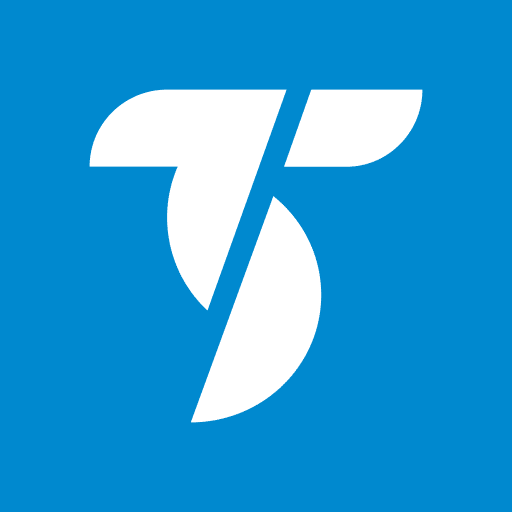For tech-savvy investors and would-be investors, these apps are a blessing. But you need to know which apps are most reliable, effective, and inexpensive if you want to make the most of your investments. We’ll cover the best app for day trading that offers the best performance and some critical details you need to decide which app is best for you.
How Do Day Trading Apps Work?
Day trading apps give you direct access to the stock market by allowing you to monitor stock prices and buy and sell stocks from the comfort of your own home or anywhere with a secure internet connection.
Day trading apps are great for monitoring your investment position and taking advantage of daily shifts in the market to increase the value of your position.
Many day trading apps also make it possible to automate a portion of your trading. Once you’ve set it up, your account will automatically buy or sell anytime the market meets certain criteria. Choose your settings well, and you’ll have created a kind of passive investment income, though it’s common to need to revisit your automatic trades and update them regularly.
Mobile apps also make it possible to monitor your investments on the go.
Day trading apps are giving day traders more freedom than ever before, and making trading more accessible at the same time. It’s possible to become a professional day trader using the apps or stick to hobby trading as a secondary source of income. How active, or inactive, you are is entirely up to you.
What Do You Need To Start Day Trading?
Thanks to day trading apps, day trading might be getting more accessible, but that doesn’t mean it’s right for everyone. Here are a few things you need to have to day trade successfully:
Capital
Having money that you don’t need is the most important requirement for day trading. While it’s unlikely that you’ll lose an entire investment day trading, it is a possibility. And losing small amounts of money is incredibly common.
If you want to make money, you need to be able to lose some and still invest safely to make it back.
With some day trading apps, you can start with as little as $10-$50 to spend, but most day traders recommend starting with no less than $250. Ideally, you should have $1,000 if you want to get started. That’s still considered a small investment in the day trading world, but it’s enough money to test your trading strategy and make adjustments and changes if you aren’t making money right away.
Live Quotes
One of the truths of day trading is that most trades happen fast. Stock and asset prices can change not only by the minute but by the second. Therefore, staying on top of current prices in real-time is critical for success.
Time
Trades might happen quickly, but you still need time to succeed as a day trader. That’s because monitoring the market will help you plan future trades and get a better sense of what stocks are doing, even if you aren’t actively trading the whole time you’re watching.
Time is also important for reading market analyses and doing your own research into companies and stocks you’re considering investing in.
Realistic Expectations
Day trading can be a fantastic way to make money and can grow investments reasonably quickly if you know what you’re doing, but you need to be realistic. Day trading takes time to learn, and the amount of time and the size of your original investment both impact how quickly you’ll be able to start making money.
Don’t expect to get fantastically rich overnight. The truth is the most novice day traders shouldn’t quit their day jobs and that it will take time to get any reasonable income from trading.
Big expectations are one of the biggest reasons day traders fail or quit. It takes patience and skill to succeed.
The Best Day Trading Apps
A few insights here. If there are any sub-headings, they should be numbered H3s:
1. WeBull – Best For Intermediate Traders
WeBull is a commission-free stock and trading app. The app is regulated by the Securities and Exchange Commission (SEC), and the Financial Industry Regulatory Authority (FINRA). That means that investors can trade through the app with the confidence that it’s safe, legal, and following all required regulations.
WeBull is a great option for intermediate investors thanks to its host of useful investment tools. Technical indicators, agency ratings, and a financial calendar all make it easier to predict market movement and invest accordingly. However, since these indicators take some experience and skill to read, it’s not necessarily an ideal app for beginners.
2. TD Ameritrade – Best Customization
TD Ameritrade is another well-respected app that allows investors to trade stocks, options, futures, and forex. Trading options are available 24/7, so you’re not limited to hours when the stock market is open.
The best part of this app is that they offer a lot of customization on your display. Get the forecasts and indicators you find more helpful front and center, and feel free to move things around to get a more helpful display.
Navigating the app is also easy, which means that the TD Ameritrade user interface doesn’t get in the way when you’re getting started. You can just start trading as soon as you’ve downloaded the app and signed in.
3. Robinhood – Best Cryptocurrency Trading App
Robinhood has been in the news more than once, both because of the remarkable way its users were impacting the stock market and because of the measures the app took to prevent significant, unwarranted stock price changes as a result of its users.
Despite some of the more recent press coverage, Robinhood is still an excellent and highly accessible app. In fact, Robinhood makes trading easy enough that it’s a good gateway app for both novices and experienced traders.
But Robinhood’s real standout feature is that it allows trading on crypto markets. Since crypto is less stable and predictable than some other markets and less popular with experienced traders, most apps don’t allow it.
In addition to crypto, Robinhood allows trading of stocks, ETFs, and options. Trades are commission and trading-fee free.
4. TradeStation – Best For Experienced Traders
TradeStation is a little different from a lot of day trading apps anymore. It’s designed with full-time day traders in mind more than new day traders or hobbyists just getting started. That means it comes with a suite of advanced indicators and market tools.
TradeStation also has the advantage of allowing cryptocurrency trades, along with stocks, futures, ETFs, mutual funds, and bonds.
Real-time market monitoring also makes it possible to stay up to date on exactly what the market, and your position, are doing.
TradeStation comes in two versions, a slimmed-down app called TS GO, and a more advanced version TS Select. TS Select is the better option for more experienced traders, but TS GO is a reasonable choice for intermediate traders and anyone who wants to give the app a try before committing.
5. E-Trade – Easiest To Use
E-Trade really opened the floodgates and make day trading more accessible to everyday people across the country. It makes sense that their app, which has been available longer than most other day trading apps, would be one of the easiest to use. The real benefit is that E-Trade has managed to come up with an app that’s easy to use and comprehensive and effective for trading.
In E-Trade’s app, you have the option of trading stocks, exchange-traded funds, futures, and options. Pricing on trades is on the low end of the scale, and an internal ratings system helps recommend trades to make your job a little easier.
The app also includes the option to reach out to E-Trade specialists if you’re ever uncertain or would like some advice about your current position and prospective trades.
What You Should Look For In A Day Trading App
Choosing a day trading app isn’t as easy as it used to be. There are dozens if not hundreds of different apps available, each with its own strengths, weaknesses, and trading options, so narrowing down to the right app for you can be a challenge.
Here are a few criteria that can help you decide which app is the best option for you.
A Good User Interface
Not everyday trading app is going to come intuitively to its users, but they shouldn’t make your job harder than it has to be. A good user interface (UI) is critical for making day trading apps effective.
Look for apps with good reviews and at least a few customization options. You should be able to access as much information as possible in as few button presses as possible, but at the same time, the screen shouldn’t be too cluttered and difficult to read.
Low Fees
Day trading often means making trades that have a relatively small profit margin. That means that you aren’t making very much, especially on smaller trades. Large fees or commissions on your trades can quickly eliminate those profits.
It’s important to look for day trading apps that are cost-effective and won’t eat away at your profits through fees.
Wide Compatibility
One problem with a lot of day trading apps is that they are only functional with very specific operating systems and internet browsers. While that can be a good thing from a speed and security standpoint, it limits your options and may make it harder to access the markets.
Choosing a day trading app with wide compatibility with different operating systems and browsers helps make sure you’ll be able to keep using the app when you upgrade your devices or are on the go.
Real-Time Reporting
Day trading effectively relies on having real-time reporting that tells the trader what the market is doing and the current accurate price on all available trades. Not all apps offer real-time monitoring, which forces the trader to rely on other ways of getting the information they need.
While it’s possible to trade while relying on another app or reporting system to get real-time information, it’s harder. Instead of trying to put together your own system, look for day trading apps that include the reporting you need directly in-app.
How Active Do You Need To Be To Make Money?
Day traders need to pay pretty close attention to the markets to make money. It’s important to make sure you’re active if you want to make money at it. Professional day traders average about 5 trades a day and work most or all days of the week.
Part-time day traders can get away with making fewer trades and taking more days off, but you should still make a couple of trades a day and more every week.
Summary
The best trading platform isn’t just about which platform has the right bells and whistles or which app has the right features. Instead, think about how you’d like to trade and how much you’d like to trade.
Day trading apps designed for beginners are also a good option for part-time traders and hobbyist traders. Professional apps are better for traders who want to make it a full-time part of their lives or use it as a secondary source of income.
Most important is finding an app that offers the kind of trading you want to do, and that presents the information you need in a way that’s easy to read and accessible. With that kind of app on your side, it’s easy to succeed.



